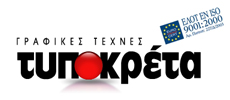Prefectures of Crete
Chania Prefecture
Municipality of ChaniaMunicipality of ApokoronasMunicipality of PlataniasMunicipality of KissamosMunicipality of Kandanos - SelinosMunicipality of GavdosMunicipality of Sfakia
Rethymnon Prefecture
Municipality of RethymnonMunicipality of MylopotamosMunicipality of AmariMunicipality of Agios VasiliosMunicipality of Anogia
Heraklion Prefecture
Municipality of HeraklionMunicipality of MaleviziMunicipality of Archanon - AsterousionMunicipality of FestosMunicipality of GortynaMunicipality of ChersonissosMunicipality of Minoa PediadosMunicipality of Viannos
Lassithi Prefecture
Municipality of MirampeloMunicipality of SitiaMunicipality of IerapetraMunicipality of Oropedio
Palaikastro
At the northernmost edge of the eastern coast of Crete lie the ruins of a settlement which flourished during the Late Minoan period (1550-1220 B.C.). At the same site, however, remains of the Early and Middle Minoan periods (3000-1550 B.C.) are preserved, mostly cemeteries with well-built ossuaries and ruins of spacious houses. The site stopped being inhabited when Zakros was abandoned (1450 B.C.) but was reoccupied during the Late Minoan III period (1300-1200 B.C.). The city covered a total area of more than 50,000 sq.m., was densely inhabited but not fortified.
To the NE of one of the city's sectors lies the sanctuary of “Dictaean Zeus”, which administratively belonged to the city of Itanos. Cult practice was continuous from the Geometric period (8th century B.C.) until the Roman conquest. It seems that the sanctuary was plundered and destroyed by fanatic Christians at the end of the 4th century A.D.
At the site Rousolakkos, where the Minoan city is located, systematic excavations were conducted by the British archeologist R. C. Bosanquet and were continued in 1906 by R.M. Dawkins. They were both members of the British School of Archaeology. During World War II some of the excavated settlements were destroyed. Considerable damage was also caused later by a bulldozer.
During the period 1965-66 excavation was conducted in a neighborhood of the city and at the nearby hill Kastri. In 1986 excavation was resumed by the British School of Archaeology at the old excavation site and is continued to the present day.



 ENGLISH
ENGLISH







